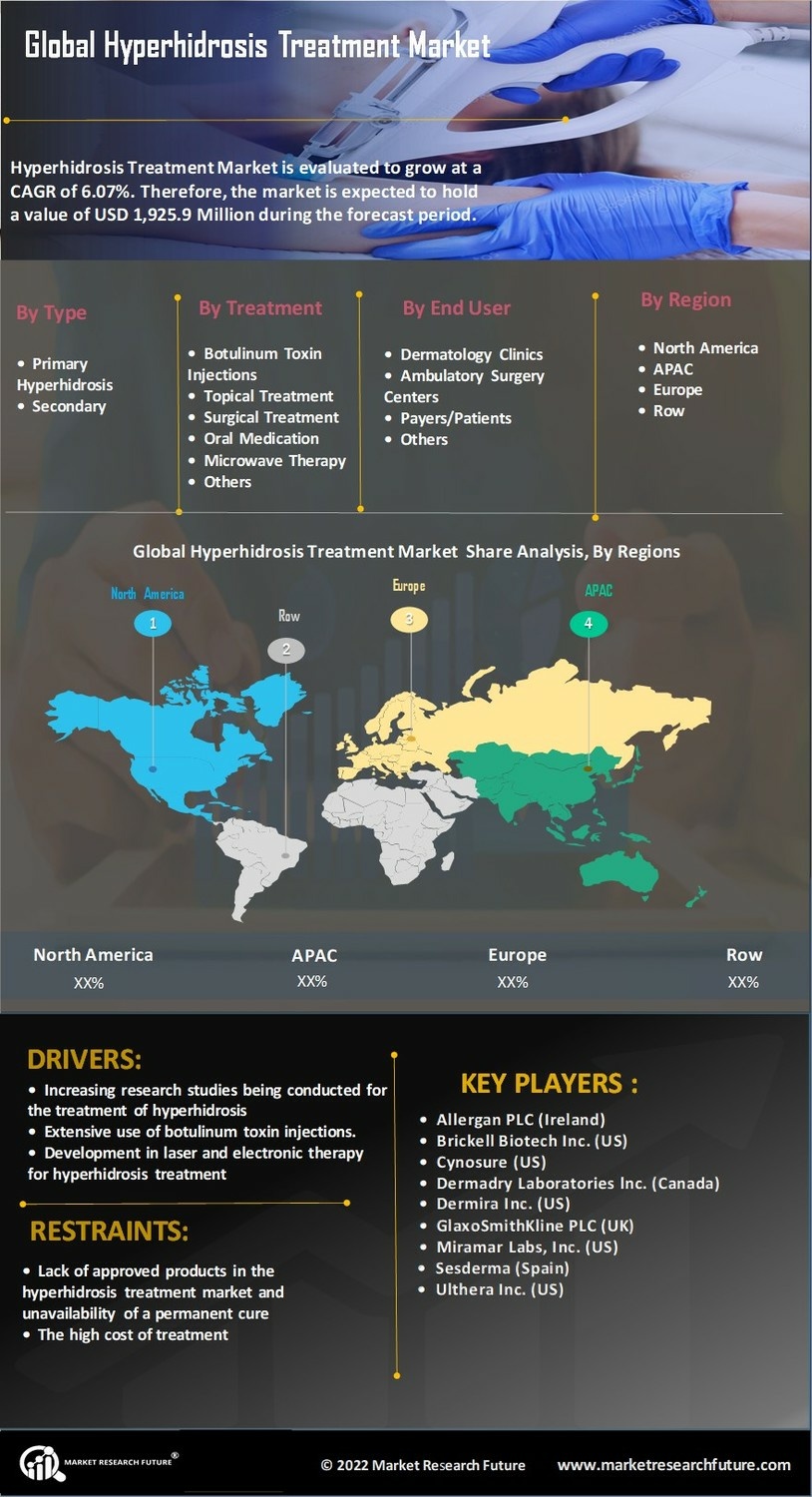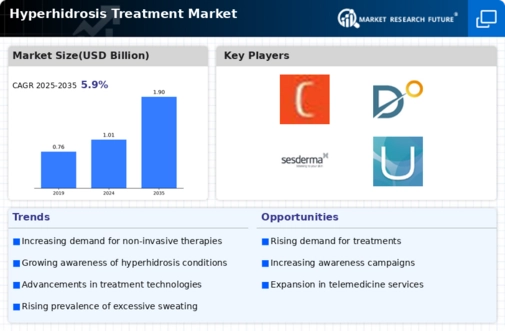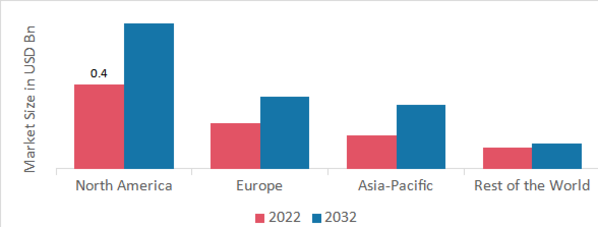Market Growth Projections
The Global Hyperhidrosis Treatment Market Industry is poised for substantial growth, with projections indicating an increase from 1.01 USD Billion in 2024 to 1.9 USD Billion by 2035. This growth trajectory reflects a compound annual growth rate (CAGR) of 5.89% from 2025 to 2035. Factors contributing to this expansion include rising awareness of hyperhidrosis, advancements in treatment options, and increased demand for non-invasive therapies. The market's potential is further bolstered by regulatory support for new treatments and a growing emphasis on patient education. These dynamics collectively suggest a robust future for the hyperhidrosis treatment sector.
Regulatory Support and Approval
Regulatory support and approval for new hyperhidrosis treatments are pivotal in driving the Global Hyperhidrosis Treatment Market Industry. Government agencies are increasingly recognizing the need for effective therapies, leading to expedited approval processes for innovative treatments. This regulatory environment fosters research and development, encouraging pharmaceutical companies to invest in new solutions. As a result, the market is likely to benefit from a steady influx of approved products, enhancing treatment options for patients. The projected growth trajectory, with the market expected to reach 1.9 USD Billion by 2035, underscores the significance of regulatory support in facilitating advancements in hyperhidrosis treatment.
Advancements in Treatment Options
Technological advancements in treatment modalities are significantly influencing the Global Hyperhidrosis Treatment Market Industry. New therapies, including botulinum toxin injections, iontophoresis, and microwave therapy, offer patients effective alternatives to traditional methods. These innovations not only enhance treatment efficacy but also improve patient satisfaction. As the market evolves, the introduction of minimally invasive procedures is likely to attract a broader patient base. The anticipated growth from 1.01 USD Billion in 2024 to 1.9 USD Billion by 2035, with a CAGR of 5.89% from 2025 to 2035, underscores the importance of these advancements in meeting diverse patient needs.
Increased Awareness and Education
There is a notable increase in awareness and education regarding hyperhidrosis, which serves as a crucial driver for the Global Hyperhidrosis Treatment Market Industry. Campaigns aimed at educating both healthcare professionals and the public about the condition are gaining traction. This heightened awareness encourages individuals to seek treatment, thereby expanding the patient population. Furthermore, educational initiatives help to destigmatize hyperhidrosis, promoting open discussions about the condition. As more people recognize the availability of effective treatments, the market is likely to see a surge in demand, contributing to its projected growth in the coming years.
Rising Prevalence of Hyperhidrosis
The increasing prevalence of hyperhidrosis globally is a primary driver for the Global Hyperhidrosis Treatment Market Industry. It is estimated that approximately 3% of the population suffers from this condition, leading to a growing demand for effective treatments. As awareness of hyperhidrosis rises, more individuals seek medical intervention, contributing to market growth. The industry is projected to reach 1.01 USD Billion in 2024, reflecting the urgent need for innovative solutions. This trend is likely to continue, as more healthcare providers recognize the impact of hyperhidrosis on quality of life, thus expanding treatment options and accessibility.
Growing Demand for Non-Invasive Treatments
The growing preference for non-invasive treatment options is shaping the Global Hyperhidrosis Treatment Market Industry. Patients increasingly favor procedures that minimize recovery time and reduce the risk of complications. Non-invasive therapies, such as topical treatments and oral medications, are becoming more popular, as they align with patient desires for convenience and safety. This shift in patient preferences is likely to drive market growth, as healthcare providers adapt to meet these demands. The anticipated market expansion from 1.01 USD Billion in 2024 to 1.9 USD Billion by 2035 highlights the potential for non-invasive treatments to capture a significant share of the market.






